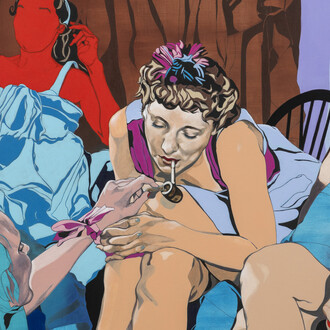The Stedelijk organised an exhibition at the height of Indonesia’s struggle for independence. 70 years later, research reveals new insights. This exhibition presents the work of the Djaya's together with photos, linocuts, catalogues and other archive material from various Dutch collections.
In 1947, at the height of the Indonesian struggle for independence, director Willem Sandberg staged the first exhibition of the Indonesian brothers Agus and Otto Djaya in the Netherlands. It was also the first solo presentation of contemporary non-Western artists at the Stedelijk. The work of the Djaya brothers focuses on the Indonesian fight for independence after the nation was declared the Republic of Indonesia in 1945. Research conducted by the museum last year into the brothers’ presence in the Netherlands, sheds new light on their activities. These new insights inspired an intriguing exhibition that fills two galleries, a symposium, and other activities.
New research carried out by independent curator and researcher Kerstin Winking into the work of the Indonesian Djaya brothers in the collection of the Stedelijk Museum Amsterdam reveals the presence of a significant amount of materials on the brothers in Dutch archives. Between 1947 and 1950, Agus and Otto Djaya were in Europe, primarily the Netherlands, involved in a secret mission to promote the cause of the Indonesian National Revolution. During this time, they produced a number of paintings, a selection of which are on view at the Stedelijk. In conjunction with works from the collection of the Stedelijk, the National Museum for World Cultures and Leiden University Library, the exhibition also features archival material that shows how closely art and politics were interwoven, that the artists were under surveillance by the Netherlands Government Information Service, and that the Djaya’s and their support of independence received the backing of Dutch intellectuals.
















